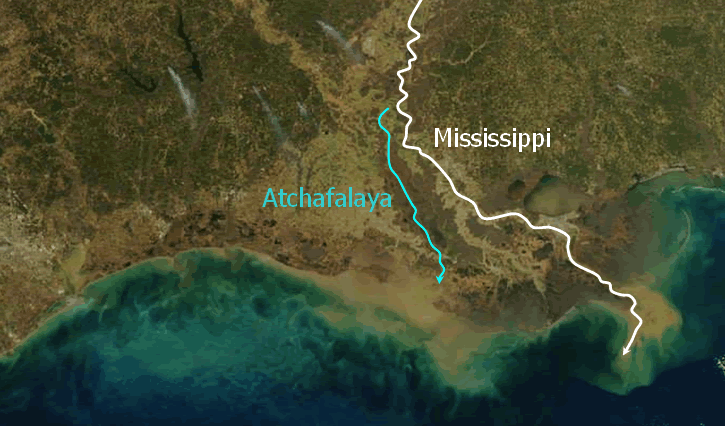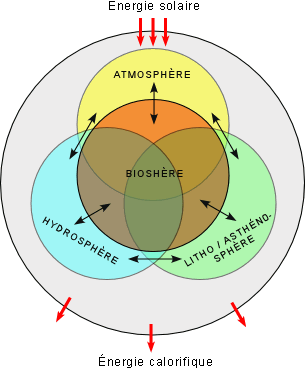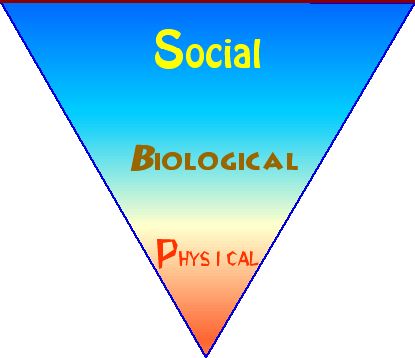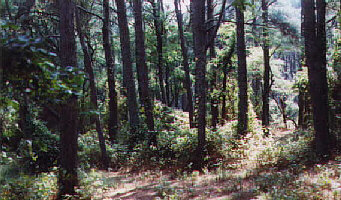
Island Planning Index
What? Planning a barrier island.
Every island plan must be described in physical, biological and social dimensions over time and the justification for the design must include all the principles of ecological design as explained on the overview pages.
Water, energy, air, and landscape are the basic physical settings. These four inanimate qualities of every place form the habitat.
The power of water is shown here in these alluvial fans -- the debris washed out of mountains. So much debris, silt and sand is eroded away that the deep base of the mountains themselves are buried in their own debris. Imagine such deposits at the base of a river's mouth and you may understand how a delta forms on particularly silt-laden rivers such as the Nile, the Colorado, Rhine, Danube, and the Mississippi Rivers.

 Should the level of the ocean rise, as it did in the Chesapeake and Delaware Bays, the delta debris is submerged and we have among the largest estuaries in North America.
Should the level of the ocean rise, as it did in the Chesapeake and Delaware Bays, the delta debris is submerged and we have among the largest estuaries in North America.
The Setting is where to start your plan. 
Physical
Note: length, width or breadth, and height or depth are the basic physical dimensions within which you need to examine, habitats, zones, solar radiation exposure, terrain, and hydrological patterns or how water moves along, across, and beneath the surface.
An island, a barrier island especially, is just such eroded debris called alluvium, except it is found in the ocean at the edge of the sea.
Our barrier islands are not well understood.
Need for ecological design criteria

Three spheres: hydrosphere, lithosphere, & atmosphere overlap in sustaining a fourth sphere: the biosphere.
We all live in these interlocking spheres.
Conservation |
Preservation |
| Wetlands & Coastal Mangroves |
Concepts to use in envisioning your island.
The Thames Estuary at Chelsea; Thomas Girtin, United Kingdom, 1830s.
What makes an estuary different? The creatures we find there are worth protecting.
Protecting the coastal zone is imperative due to coastal growth.
All environmental problems have three facets:

Questions to consider on islands?

The pine forest flourishes because of unseen ingredients in the biotic community: symbiotic root bacteria that enable trees to flourish in nutrient poor soils.

Some pine cones only open to spread seeds when exposed to a low-temperature fire. This is an example of the physical impact on plant reproduction.
Physical
reality is experienced in three dimensions (minimally) and four facets of the habitat:

Biological
Island's characteristics
reducing Green House Gas (GHG) emissions
ecological system's parts
plans that take ecology into account.
problems of ecological change.
criteria, ecological thinking.
Development of ecological thought

Social
Ecosystem services defined
Ecological integrity described
value's table (Ian McHarg's)
Design with healthy people in mind.
Urban redesign: The New Urban Agenda
Before and after look at a green roof.